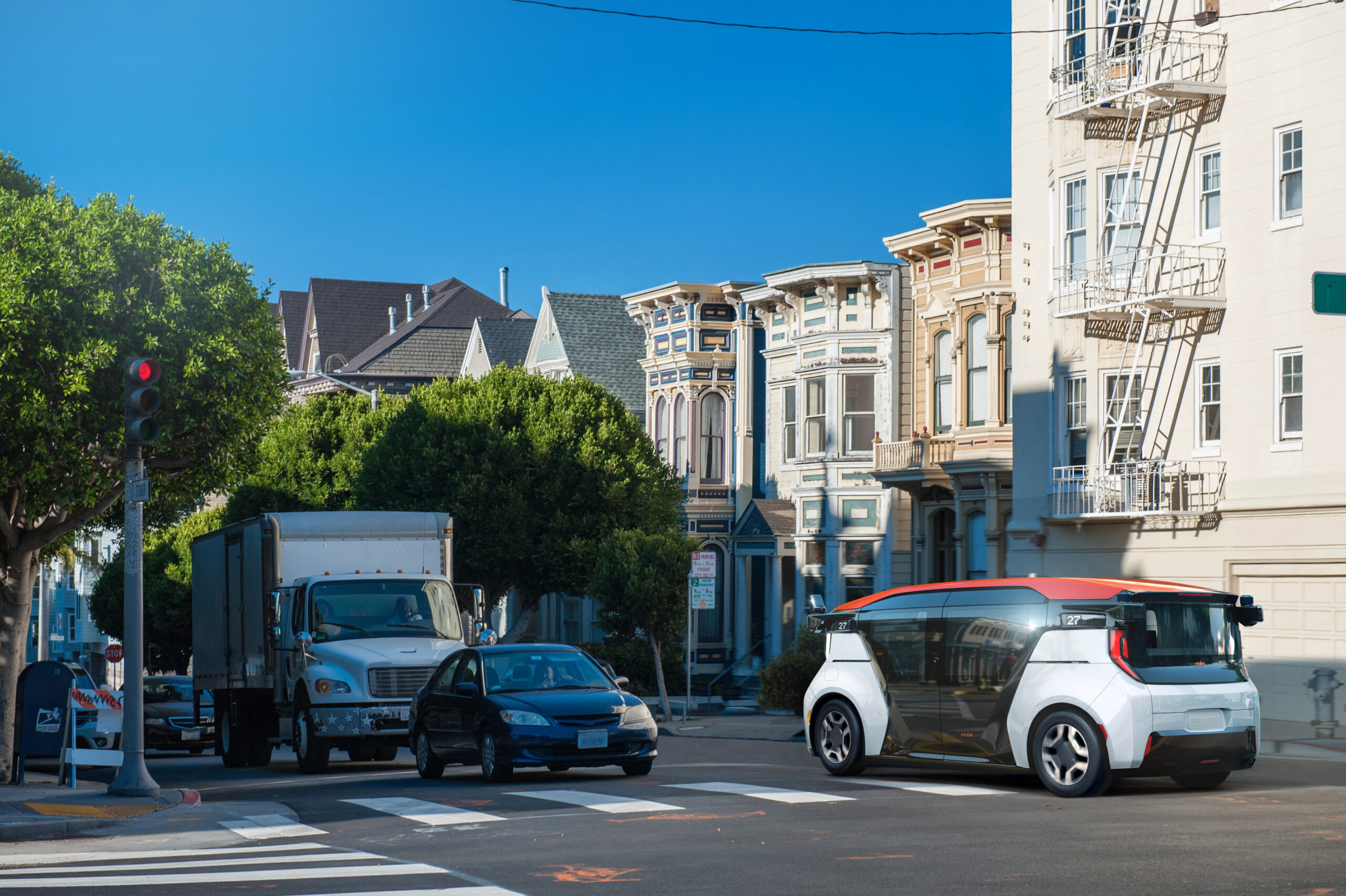Federal regulators are seeking more information from Cruise on its technology and performance on public streets as they weigh whether to allow deployment of its Origin self-driving vehicle, which features no driver’s seat, no brake pedal and no steering wheel.
Officials with the National Highway Traffic Safety Administration (NHTSA) made the ask in response to concerns from San Francisco officials that the company’s vehicles have led to myriad traffic problems and the new model could exacerbate the problem.
Cruise, which is owned by General Motors, is seeking a temporary exemption from federal motor vehicle safety standards for its Origin model, a self-driving vehicle that contains no manual steering controls and seats six adults facing each other.
In a letter addressed to Hoang Ngo, a vehicle safety manager for General Motors, an official with the NHTSA said the agency is in the process of reviewing Cruise’s application, but needs answers to additional questions about the safety and operations of the vehicle to make its decision.
Among the questions federal regulators want answered are how Cruise centrally tracks its vehicles in operation, detailed info about instances when vehicles shut down or enter a fail-safe condition, and incident response times when vehicles fail or stop.
NHTSA officials are also seeking info about when the company will contact first responders or dispatch its own crews, adequate entry and exit systems that don’t impact fellow road users, and when vehicles decide to stop in the middle of the lane versus pulling over to the curb.
The agency is also asking about the cause of an incident last June when a cluster of 13 Cruise vehicles all stopped in a busy street in San Francisco and what technology modifications the company has used to prevent something similar.
“We appreciate NHTSA moving the petition forward and will continue working closely with the agency to ensure the safe and responsible deployment of the Origin, the first purpose-built passenger AV set to be manufactured and deployed in the United States,” said Hannah Lindow, a spokesperson for Cruise.
Lindow added that Cruise is the only company at this time that has sought review from NHTSA for its purpose-built autonomous vehicle.
A Bumpy Road
In September, officials from the San Francisco Municipal Transportation Agency (SFMTA) and the San Francisco County Transportation Authority (SFCTA) took the unusual step of raising their concerns about chaos on public streets caused by Cruise self-driving cars directly to federal authorities.
In a 39-page letter addressed to the NHTSA, the heads of the two transit agencies made a number of policy recommendations echoed by federal regulators, including data reporting on vehicle failures that block roadways and response times by company staff, as well as collaboration with San Francisco authorities on pickup and drop-off locations.
The letter also states the city’s concern that the Cruise Origin may have to be manually retrieved by towing in the event of failure, which could lead to even more disruption.
Those comments were given additional legislative heft from the San Francisco Board of Supervisors, which unanimously approved a resolution in December affirming the position of the SFMTA and SFCTA and calling on regulators to address safety and traffic concerns caused by autonomous vehicles and robo-taxis.
Since then, local transit authorities have continued to put pressure on Cruise and Waymo in an effort to slow the growth of their services in the city. San Francisco officials have limited statutory authority to limit deployment and testing of self-driving car services, as these are mainly regulated at the state level.
The Department of Motor Vehicles (DMV) permits self-driving car companies to operate their vehicles on public streets, while the California Public Utilities Commission (CPUC) governs services that carry passengers.
In a sign of the complex regulatory environment, Cruise recently received a permit to test its Origin vehicle on public roads by the DMV even as it faces additional questions from the NHTSA.
Last month, transit officials wrote letters to the CPUC to protest the companies’ efforts to expand their hours of operation and geographic scope to the vast majority of the city, including the dense downtown core.
The letter identified 92 unique incidents between May 29 and Dec. 31 mainly from Cruise that included stopped vehicles blocking buses, near-misses with trains and one incident where a firefighter smashed a car window to stop a Cruise from encroaching on an active fire scene.
For its part, Cruise reported that over the period between Sept. 1 and Nov. 30, the company’s commercial service quadrupled its rides and miles from the previous quarter without any major collisions.
According to the DMV’s record of autonomous vehicle collisions, Cruise vehicles were involved in four accidents during that period, but only one while the car was operating in driverless autonomous mode.
